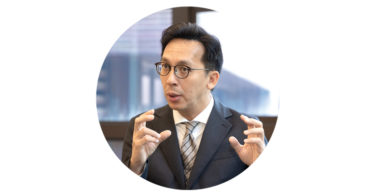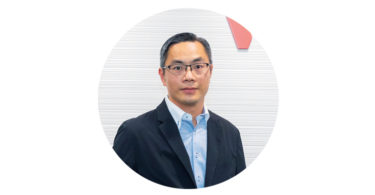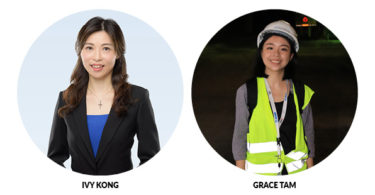Dr Ronald Lu is the founder and chairman of award-winning architectural firm Ronald Lu & Partners (RLP).
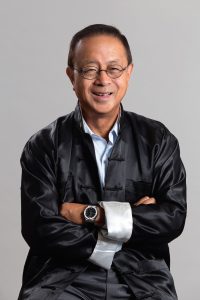 Lu obtained his first professional degree in Sydney, Australia, with a subsequent master’s degree from the Massachusetts Institute of Technology (MIT) in the United States. He established RLP in 1976, and his extensive experience covers Hong Kong, China and other parts of Asia, as well as various local and international engagements in the private and public sectors. Lu is an active member of a number of professional organisations within the architecture industries of Hong Kong and China, and he is actively involved in community work.
Lu obtained his first professional degree in Sydney, Australia, with a subsequent master’s degree from the Massachusetts Institute of Technology (MIT) in the United States. He established RLP in 1976, and his extensive experience covers Hong Kong, China and other parts of Asia, as well as various local and international engagements in the private and public sectors. Lu is an active member of a number of professional organisations within the architecture industries of Hong Kong and China, and he is actively involved in community work.
What originally inspired you to study architecture and become an architect?
To be an architect, you need to have a lot of exposure. I got my influence from my family as they are involved in development in Australia. When I grew up in Australia, my family and I would talk about development issues at the table. During holidays, we would go to the sites to look at construction works. At the construction site, I saw people working, and I saw someone dressed casually but smartly. That person would look at things and give instructions; and that’s the architect. I think a little seed had been planted in my head then.
I am also quiet and observant. My character is such that I can’t sit still, and I am not the kind of person to sit in an office for the whole day. So I began to think that being an architect was quite suitable for me.
As the architect of many landmark buildings in Hong Kong, which one do you regard as your proudest project? What set it apart from other projects?
I think the most important part of being an architect is to make a difference in people’s lives, like what we always say, ‘design better life’. You can do this through the sort of building that you design. The building has to be functional, perform and meet certain human needs.
I would say that the Ko Shan Theatre in Kowloon is a very inspirational and quietly successful project. It is actually designed to be dedicated for Chinese opera performances. It not only meets all of the client’s requests in terms of performance, but it is also very environmentally friendly. Not only can the audience go to the theatre, but the public can also walk through the building, up to the top, to do tai chi in the mornings. This shows that the building is integrated with the community.
Another project is Lee Tung Avenue in Wan Chai. It was known as a local wedding cards street. The Urban Renewal Authority bought and closed the street to redevelop it as a residential tower and commercial area. It is now a popular focal point. The public open space and shopping arcade, with its ‘boulevard-veranda’ design concept, complete the missing link among urban, social, cultural and heritage connections.
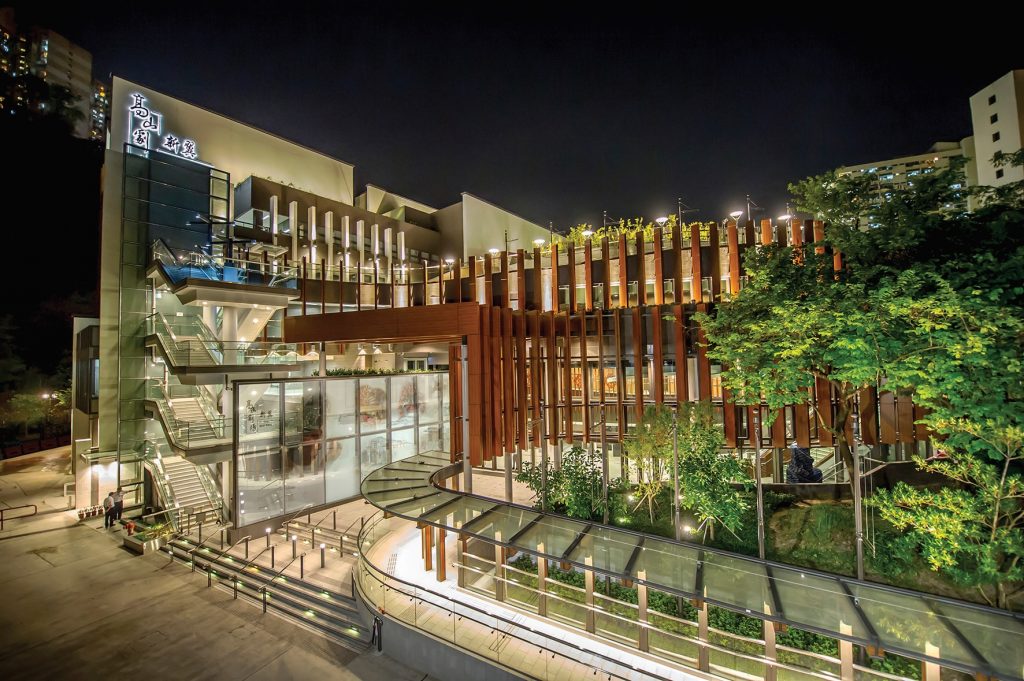
As a foremost architect in Hong Kong, which characteristics do you think are important for a young architect to come out tops in the industry?
You need to have a certain sense of visual appreciation of what you think is beautiful. You have to appreciate what is good. You need to be aware of what you are designing for people. You need to understand the sociology and norms, which are about how people think. For example, what we design in Hong Kong would probably suit Hong Kong. But when we bring these ideas and designs to Guangzhou or Shanghai, it is not going to work.
Stepping into its 40th anniversary, Ronald Lu & Partners emphasises the ‘design better life’ philosophy by committing to innovative and sustainable design. Can you share with us a significant accomplishment to this end?
I started off doing very small individual housing and then expanding to different kinds of projects. It has been a journey. I also grew up with Hong Kong, and Hong Kong has become more sophisticated and demanding. We need to meet the expectation of our clients.
I think one of the most remarkable accomplishments is how we promoted sustainability since 10 years ago. We promoted it in a very big way. At that time, we were asked by Carrie Lam to design the Zero Carbon Building in Kowloon Bay. She had gone to a sustainability conference in Singapore, where she found that many countries were well ahead of us. The Zero Carbon Building generates enough electricity to replace all that it will use at the end of its 50-year building life cycle. We used a lot of sustainable materials, such as timber and a lot of building materials that were on-site.
Another project is the China Resources Building, which is a very ordinary-looking building from the outside. The client asked whether we could help them to undergo a facelift. So we looked at the traffic patterns, as well as how the cars and pedestrians moved around. We finally enhanced the natural ventilation by demolishing the upper podium floors to improve the building permeability at the podium level.
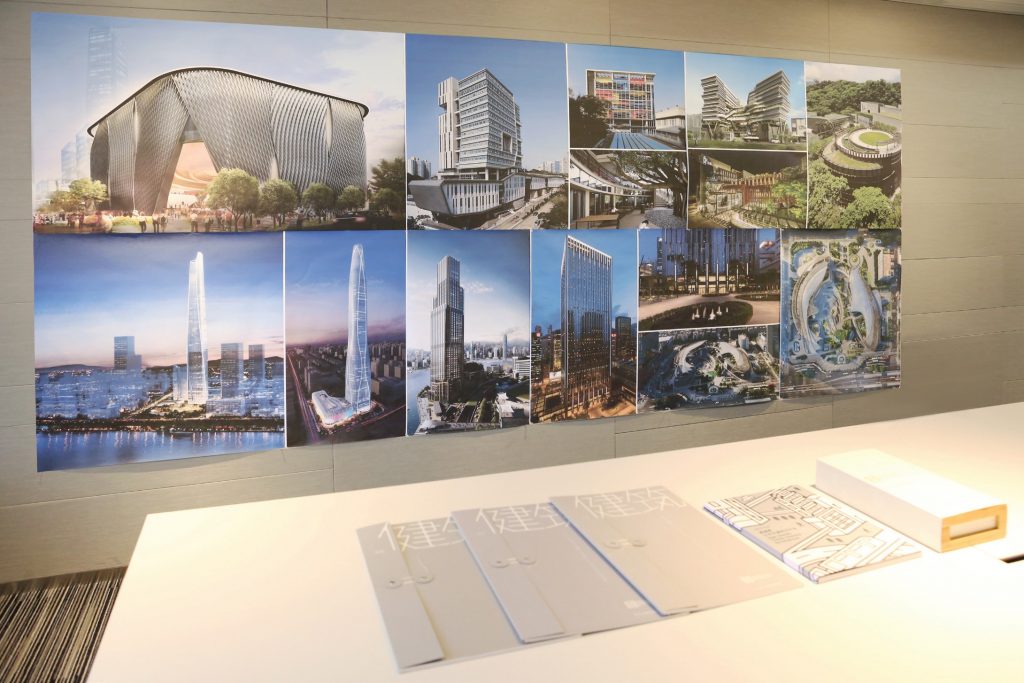
The aim of HK2030+ is ‘Planning for a Liveable High-density City’. Given that Hong Kong is relatively small and densely populated, how can we plan and design a higher-quality city for the future generations with limited space?
I think you have to imagine what spaces we have and how to make them better. Land is a scarcity. You need to make the best use of them. For 2030+, we need to talk about making use of underground spaces that are hardly used for transportation and communication between stations. You can take a look at Central, where the largest landowner, Hongkong Land, decided to connect their buildings with overhead bridges, successfully providing a way for pedestrians to walk around without worrying about cars. At the same time, the values of the first floors of their buildings have increased. There is no reason why we can’t bring this idea underground, like the tunnel that connects to Wan Chai station.
My original idea was to have the new Kai Tak stadium in Victoria Park. When you look down to Causeway Bay, you find that it is very busy and well-lit. In the eastern side, North Point is very dark, but there is no reason why they can’t be connected. The problem for Victoria Park is that you have a lot of buses and taxis with high pollution. If it can be raised up a bit, and have all the public transportation underground, you can then have a retail space underneath Victoria Park that leads to North Point. The whole area can then be developed.
There are a lot of possibilities in Hong Kong given its small space. It has an advantage compared to elsewhere, say in America, where there is a lot of space for you to build something but no one to go there! But in Hong Kong, everyone is so close that when you build something exciting, it can transform the whole city. What is lacking in Hong Kong is public open space. We do not have much open spaces. Lee Tung Avenue is an example. But I think there could be a lot more. If Central Market is built properly, it could be an interesting space as well. Another good example is in Tsim Sha Tsui, where there are also a lot of underground stations. These are nothing new and have been built overseas many years ago. Look at the London Underground and New York City Subway.
In fact, there is a story about Montreal. There is an old town in Montreal with trains running along the St. Laurent River. On the top of the hill, there was a railway depot with railway lines, and that was just an empty site. In the 1960s, I was hired as an architect by a developer from New York to do a development there. They built an office, development with residential, hotels, retail and underground areas that connected to other parts of the city. And that became so successful. In Montreal, it makes a lot of sense because of the adverse weather conditions. It is very cold in winter so you do not want to walk outside. You want to walk inside that place. In Hong Kong, it is similar. It is very hot and rainy in the summer, and it is good to walk in a controlled space. So going underground makes a lot of sense, which is very similar to what we have done in Central with an elevator system. So we have to think vertically, rather than horizontally.
Developing underground space is one of the ways to increase land supply. What are the challenges in having this kind of development in Hong Kong compared to other countries?
The reason why Central is so successful is that the land property belongs to a single owner. But in Hong Kong, it is hard to find other areas that have such a concentrated ownership. There is no harm in doing a master plan and getting everyone to agree. MTR does it very well—people go from one station to another, therefore it is guaranteed that people will use it. When people use it, it is not just going to be a corridor, but a corridor with activities. And that will be much more interesting.
What impact will technological change have on the architecture industry in the future?
I think we have come a long way from pencil, paper, eraser and set squares—those days are gone. If you look at all the old masters, they wore bow ties as they were afraid that ties might get in the way. But now, it is all about technology.
Building information modelling (BIM) is very hopeful for the industry. But it is important to have everyone in the industry use it—not only the architects, but also the structural and mechanical engineers, contractors and owners. It would be helpful to keep checking the progress if everyone uses it. Also, if things are in conflict, you have mechanical, air-conditioning and fire services in the building. BIM can help us to solve such problems.
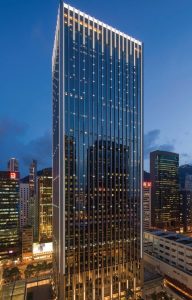 What is the biggest challenge facing the 21st-century architect?
What is the biggest challenge facing the 21st-century architect?
One of the major challenges facing the 21st-century architect is the understanding of materials. In the old days, people use stone for building as it is a good building material. But at the same time, it has its own limitations as it cannot build so high.
I think there is going to be a lot more development of glass as it is thin, strong and light at the same time. It is also bulletproof, which is useful for security. You can use it for all sorts of different things.
What are your expectations towards the new government in terms of policy making for land issues and sustainability?
We have a new chief executive, and I have confidence in her because she was the Secretary for Development. She was also the Chief Secretary and worked in different government departments. I think she wants to get things done. She wants to develop more land, which I think is a good thing as there is a lot of land in Hong Kong. We have only built on 25 per cent of the land in Hong Kong. We still have 75 per cent of land to be built on. In the southern part of Lantau Island, there is still a lot of land for development. If the infrastructure, bridges and tunnel can get there, there is a huge potential to be developed.

 Malaysia
Malaysia Singapore
Singapore Indonesia
Indonesia Tiếng Việt
Tiếng Việt ประเทศไทย
ประเทศไทย





